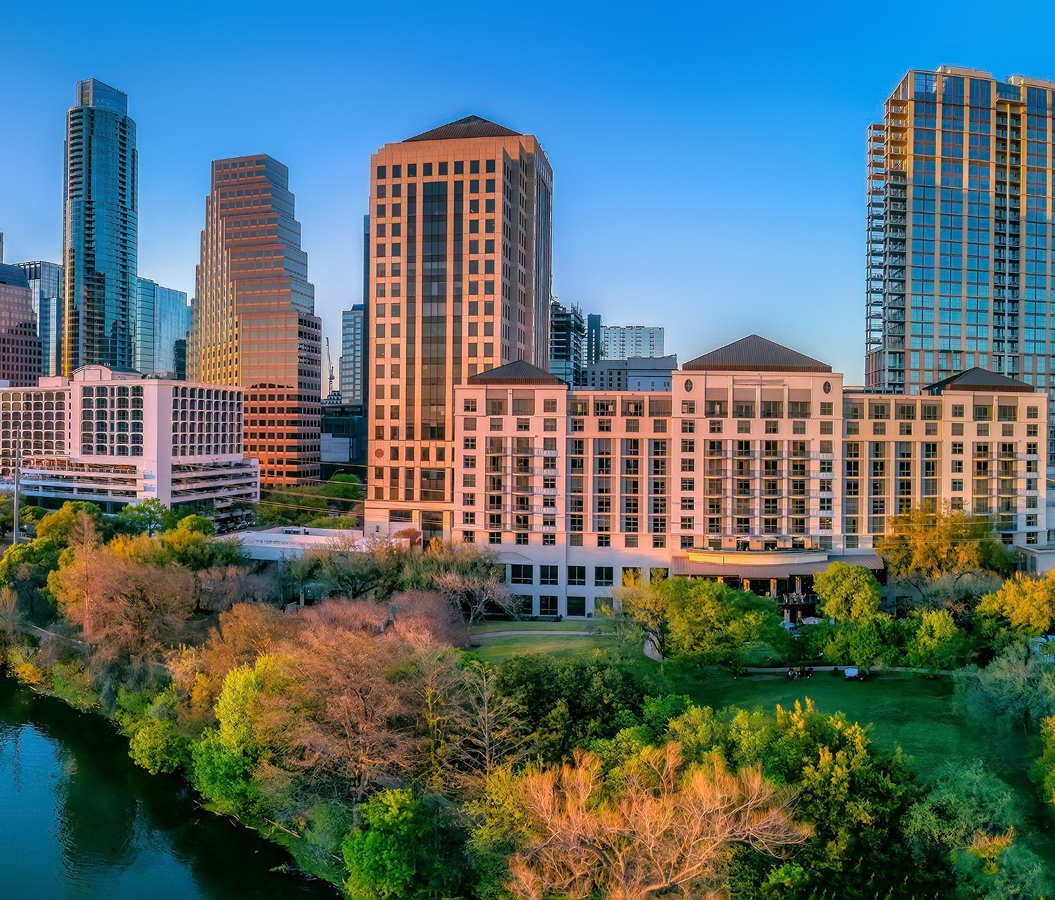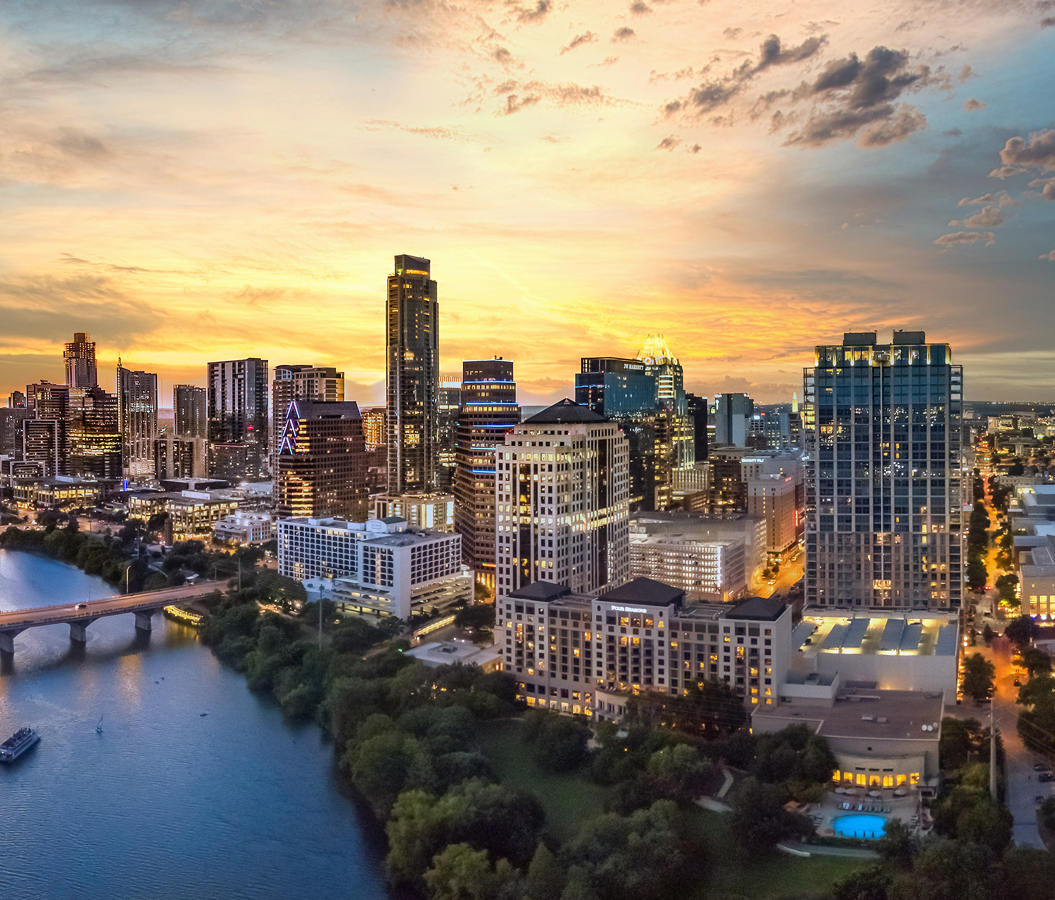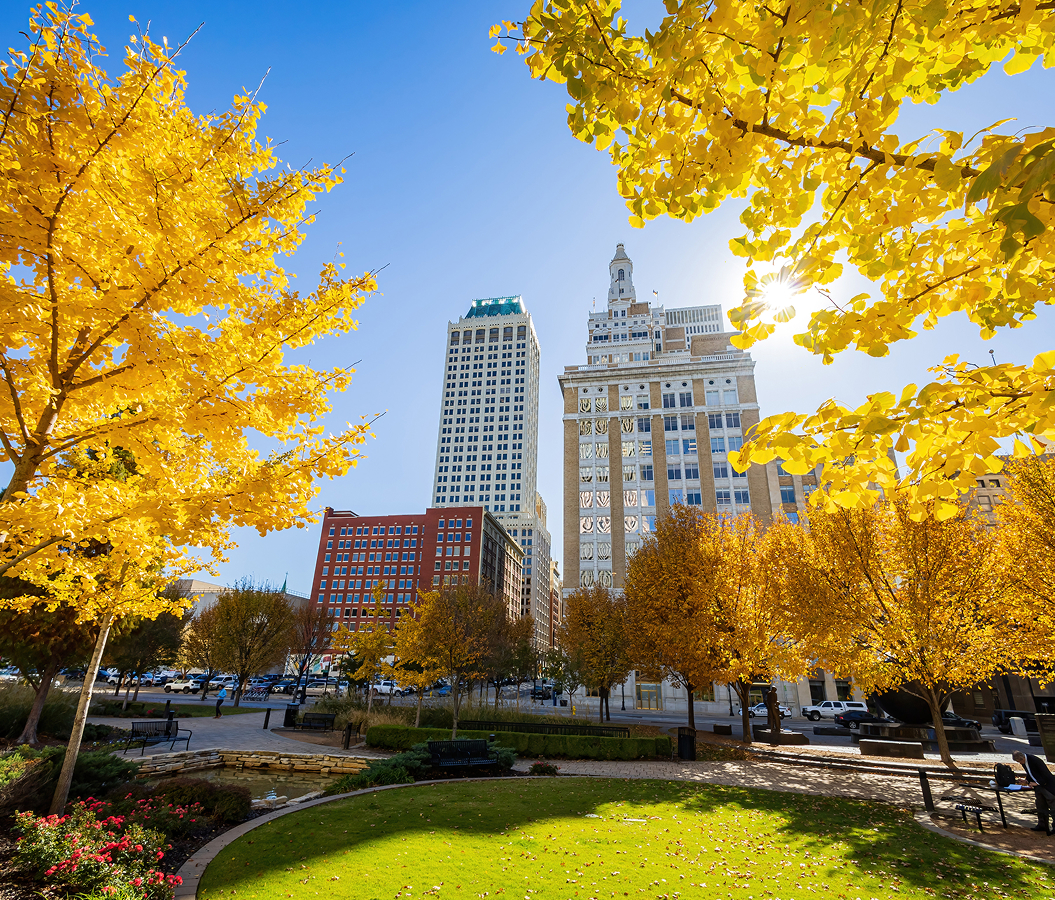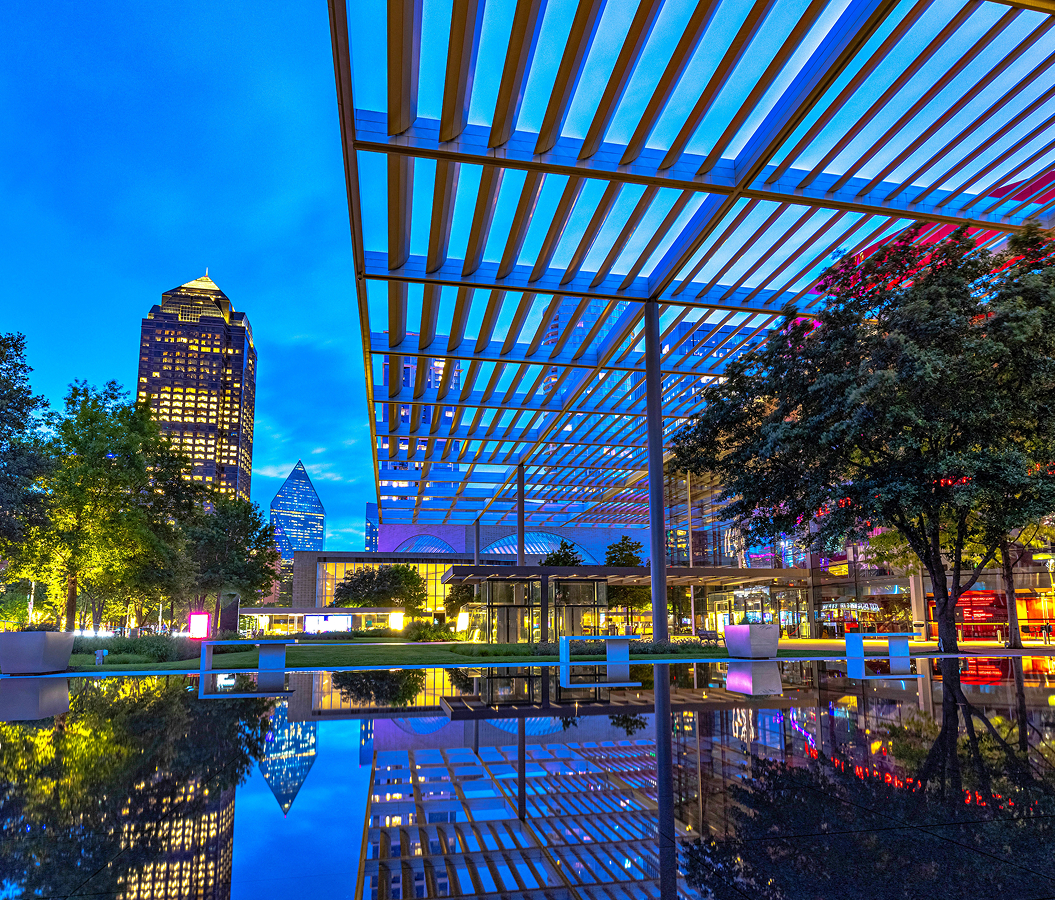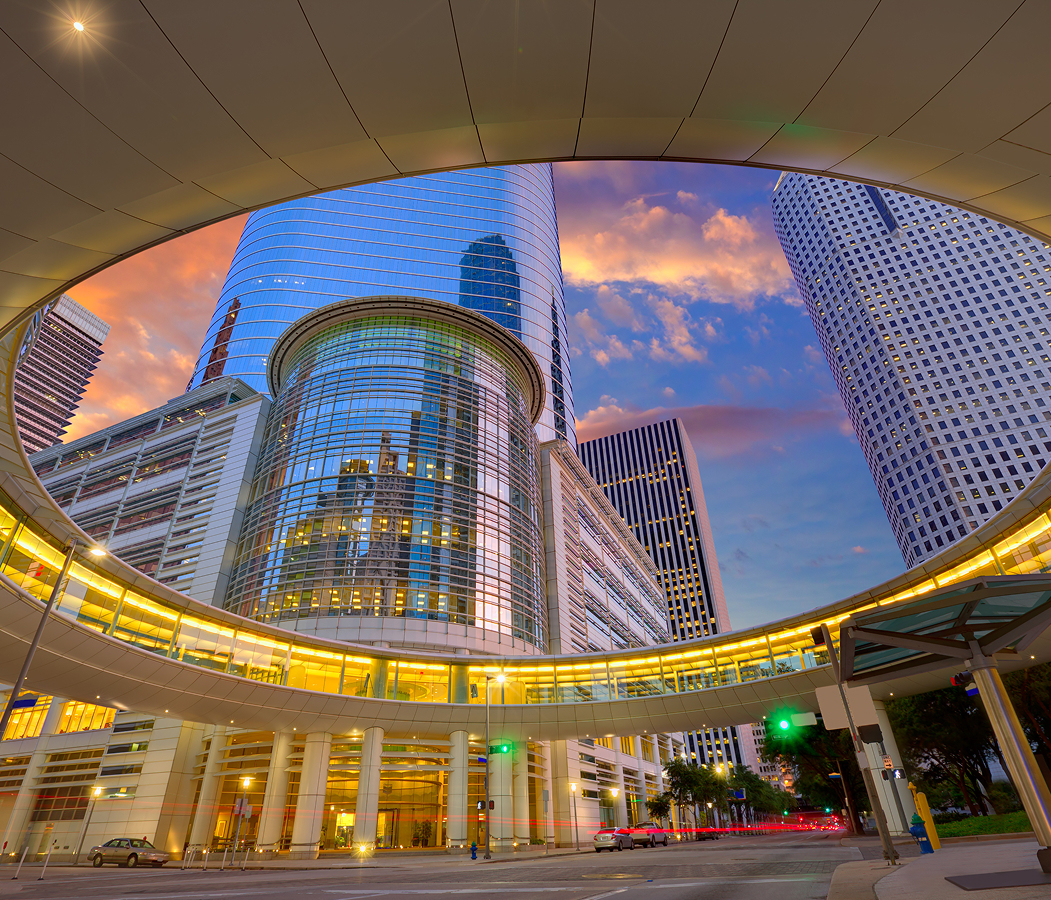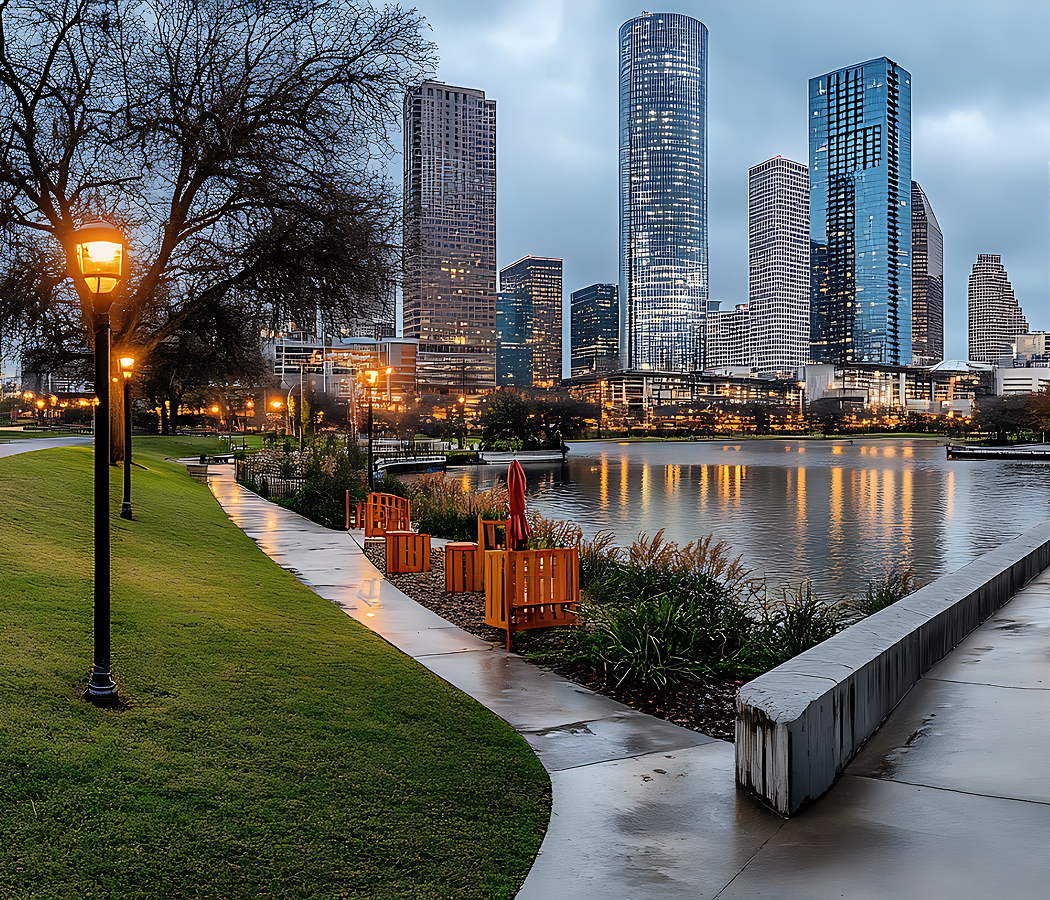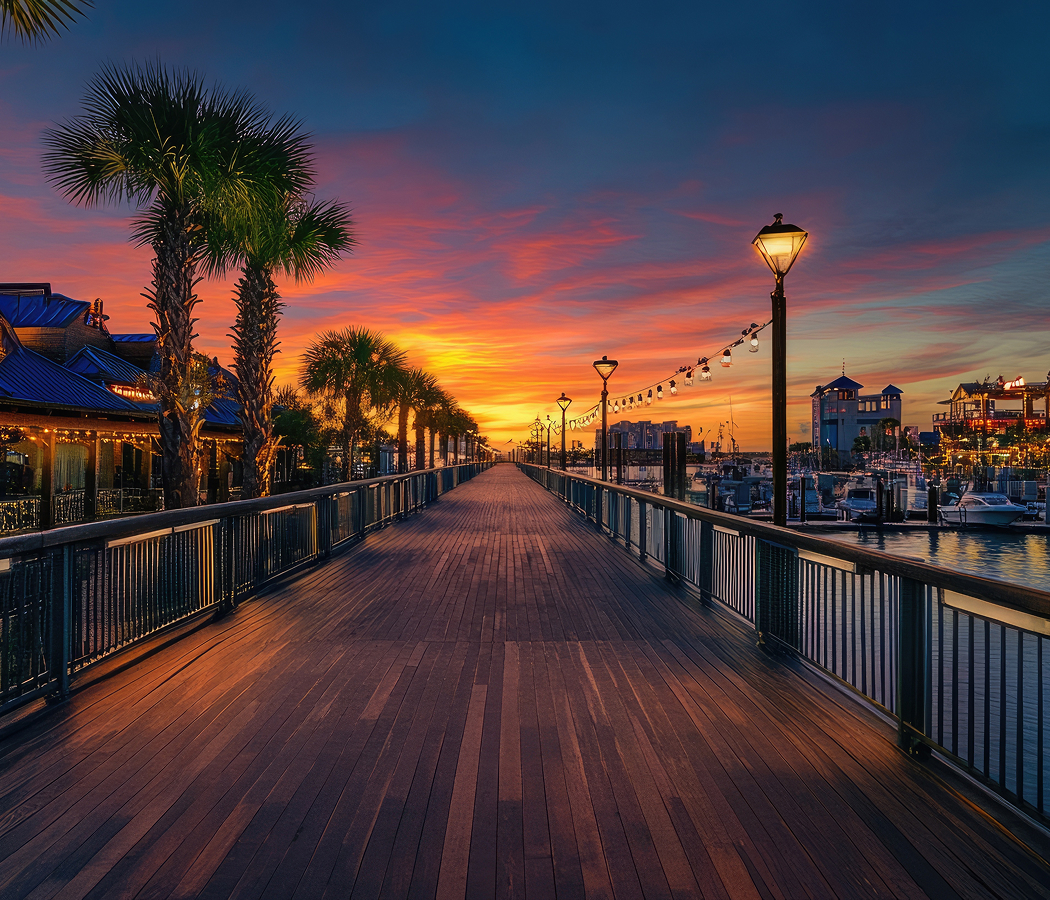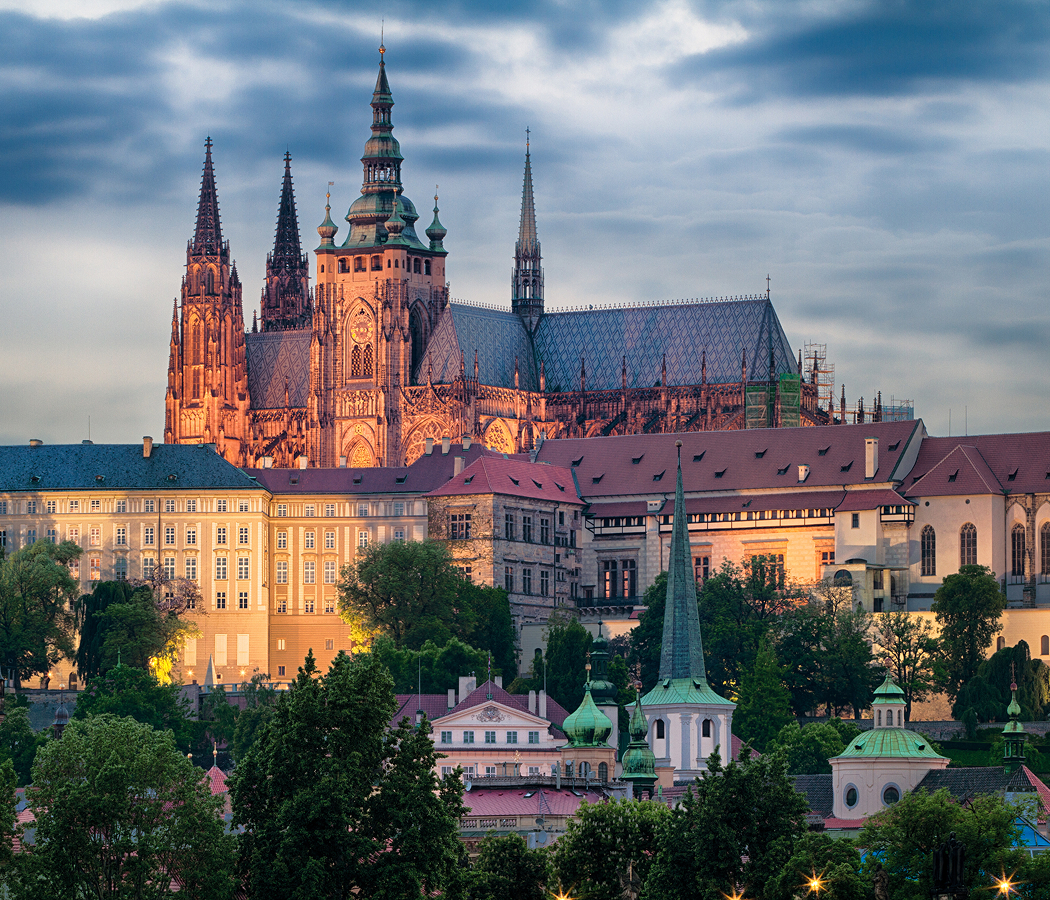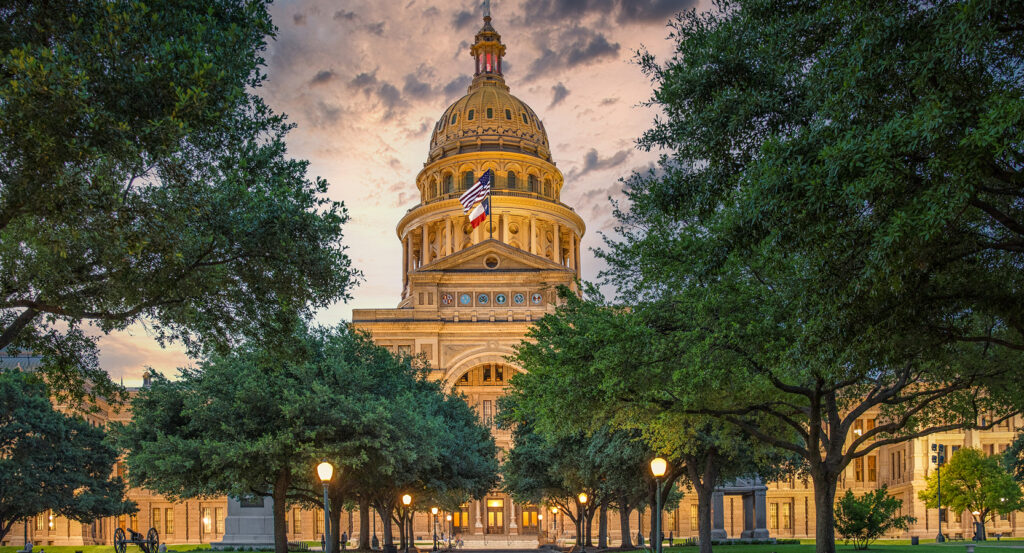
Why you should experience the Texas State Capitol in Austin.
The Texas State Capitol isn’t just the heart of Texas government, it’s the embodiment of Texan pride, independence, and sheer scale, standing taller and prouder than nearly any capitol in America.
Completed in 1888 and designed by architect Elijah E. Myers, this monumental Renaissance Revival structure rises majestically over downtown Austin, a pink granite fortress glowing beneath the endless Texas sky. It stands fourteen feet taller than the U.S. Capitol in Washington, D.C., a deliberate gesture of confidence and self-assurance that feels quintessentially Texan. Every inch of its design reflects the state’s identity: bold, beautiful, and built to last. The building’s façade, composed entirely of native granite from Marble Falls, shimmers in tones of rose and amber as the light shifts throughout the day. Its dome, crowned by a statue of the Goddess of Liberty, gleams above the sprawling grounds of Capitol Park, commanding the city’s skyline from every direction. The grand architecture, inspired by Italian Renaissance ideals, captures both elegance and strength, from the massive rotunda with its soaring dome to the ornamental cast-iron staircases that spiral like sculpted lace. Step inside, and the first impression is one of awe. The echoing marble floors, star-inlaid medallions, and wood-paneled chambers radiate craftsmanship and pride. Everything here feels monumental but human, a building made not just for governance, but for gathering. In true Texas fashion, the Capitol doesn’t whisper its presence; it declares it, with grace, grandeur, and grit.
What you didn’t know about the Texas State Capitol.
Behind its towering façade and pink granite glow lies a story as vast and surprising as the state it represents.
When construction began in 1882, Texas had just entered a new era of prosperity, driven by cattle, cotton, and railroads. The legislature wanted a capitol worthy of that ambition but faced a challenge: the state had little cash to fund the project. The solution was as audacious as it was creative, the government paid the builders not in money, but in land. Over 3 million acres in the Texas Panhandle were granted to the contractors, forming the legendary XIT Ranch, which became one of the largest cattle operations in the world. That bold exchange turned a building into a symbol of Texas enterprise. Architect Elijah Myers, who also designed the Colorado and Michigan Capitols, envisioned Austin’s capitol as a cathedral to democracy, and his design succeeded. The interior brims with symbolic detail: six-pointed brass stars (the Lone Star motif) are embedded in everything from doorknobs to ceiling tiles, while intricate murals and portraits chronicle the lives of every governor since statehood. The dome, rising 308 feet above ground, features a whispering gallery effect, stand on one side and your voice will carry perfectly across to the other. The central rotunda, lined with balconies, invites you to look upward into an almost infinite series of circles that seem to spiral toward heaven. The Capitol grounds are just as intentional, landscaped with sprawling oaks, monuments, and pathways that connect to the Governor’s Mansion and downtown Austin’s vibrant streets. Inside, modern governance unfolds amid timeless beauty, the House and Senate Chambers are still in active use, filled with antique desks, original fixtures, and a sense of continuity that few statehouses can match. The building has survived fires, expansions, and even lightning strikes, but it remains remarkably intact, its materials weathering the Texas sun and storms with enduring grace. It was the first state capitol to be fully restored under the National Historic Landmark program, an effort that began in the 1990s and returned it to its 19th-century glory while incorporating modern safety and environmental technology. The result is a structure that feels alive, history humming through every hallway, the past and present intertwined beneath that vast, star-crowned dome.
How to fold the Texas State Capitol into your trip.
To experience the Texas State Capitol properly, let the building guide your pace, it’s a place to explore with reverence and curiosity.
Begin at the main entrance off Congress Avenue, where the long, tree-lined view frames the Capitol like a painting. As you approach, take in the immense scale, the granite blocks, quarried less than 50 miles away, each hand-fitted with astonishing precision. Once inside, stand at the center of the rotunda and look up; the dome rises like a cathedral of democracy, its acoustics creating a soft echo that carries even the faintest whisper. Guided tours depart every 30 minutes, led by knowledgeable staff who weave tales of politics, intrigue, and architectural genius with characteristic Texas charm. Don’t miss the House and Senate Chambers, their mahogany desks, marble rostrums, and deep green and crimson drapery create an atmosphere both regal and grounded. The Capitol Extension, an underground expansion completed in 1993, blends modern engineering with invisible elegance, housing additional offices, exhibits, and hearing rooms without disturbing the original skyline. Make time to wander the surrounding 22-acre grounds, where historic statues honor everyone from pioneer women and Confederate soldiers to Tejano leaders and civil rights activists, a layered reflection of Texas’s complex history. Visit near sunset when the dome ignites in pink-gold light, then stay until evening, when spotlights transform the structure into a glowing sentinel over Austin. For a local’s perspective, grab coffee or ice cream on nearby Congress Avenue, where the Capitol’s dome gleams at the end of the street, always visible, always central. And if you’re lucky enough to visit during the legislative session, linger outside the chambers; you’ll hear the hum of democracy in motion, voices raised, debates unfolding, ideas shaping the future beneath that brilliant dome. The Texas State Capitol is more than a landmark, it’s a declaration of identity, a monument to ambition, and a living symbol of a state that does everything big and beautiful. To stand beneath its dome is to feel the heartbeat of Texas, strong, unyielding, and proud beneath the boundless sky.
Hear it from the Foresyte community.
You walk up and it’s like texas had to prove a point, bigger than DC and glowing pink at sunset. It’s extra and kinda fun to play along.
Where meaningful travel begins.
Start your journey with Foresyte, where the planning is part of the magic.
Discover the experiences that matter most.

